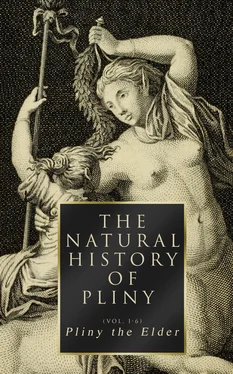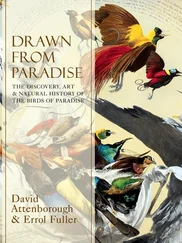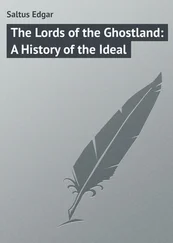CHAP. 4. (3.)—OF NEARER SPAIN.
CHAP. 5. (4.)—OF THE PROVINCE OF GALLIA NARBONENSIS.
CHAP. 6. (5.)—OF ITALY.
CHAP. 7.—OF THE NINTH1167 REGION OF ITALY.
CHAP. 8.—THE SEVENTH REGION OF ITALY.
CHAP. 9.—THE FIRST REGION OF ITALY1264; THE TIBER; ROME.
CHAP. 10.—THE THIRD REGION OF ITALY.
CHAP. 11.—SIXTY-FOUR ISLANDS, AMONG WHICH ARE THE BALEARES.
CHAP. 12. (6.)—CORSICA.
CHAP. 13.—SARDINIA.
CHAP. 14. (8.)—SICILY.
CHAP. 15. (10.)—MAGNA GRÆCIA, BEGINNING AT LOCRI.
CHAP. 16.—THE SECOND REGION OF ITALY.
CHAP. 17. (12.)—THE FOURTH REGION OF ITALY.
CHAP. 18. (13.)—THE FIFTH REGION OF ITALY.
CHAP. 19. (14.)—THE SIXTH REGION OF ITALY.
CHAP. 20. (15.)—THE EIGHTH REGION OF ITALY; THE PADUS.
CHAP. 21. (17.)—THE ELEVENTH REGION OF ITALY; ITALIA TRANSPADANA.
CHAP. 22. (18.)—THE TENTH REGION OF ITALY.
CHAP. 23. (19.)—ISTRIA, ITS PEOPLE AND LOCALITY.
CHAP. 24. (20.)—THE ALPS, AND THE ALPINE NATIONS.
CHAP. 25. (21.)—LIBURNIA AND ILLYRICUM.
CHAP. 26. (22.)—DALMATIA.
CHAP. 27. (24.)—THE NORICI.
CHAP. 28. (25.)—PANNONIA.
CHAP. 29. (26.)—MŒSIA.
CHAP. 30.—ISLANDS OF THE IONIAN SEA AND THE ADRIATIC.
BOOK IV.
CHAP. 1. (1.)—EPIRUS.
CHAP. 2.—ACARNANIA.
CHAP. 3. (2.)—ÆTOLIA.
CHAP. 4. (3.)—LOCRIS AND PHOCIS.
CHAP. 5. (4.)—THE PELOPONNESUS.
CHAP. 6. (5.)—ACHAIA.
CHAP. 7.—MESSENIA.
CHAP. 8.—LACONIA.
CHAP. 9.—ARGOLIS.
CHAP. 10. (6.)—ARCADIA.
CHAP. 11. (7.)—ATTICA.
CHAP. 12.—BŒOTIA.
CHAP. 13.—DORIS.
CHAP. 14.—PHTHIOTIS.
CHAP. 15. (8.)—THESSALY PROPER.
CHAP. 16. (9.)—MAGNESIA.
CHAP. 17. (10.)—MACEDONIA.
CHAP. 18. (11.)—THRACE; THE ÆGEAN SEA.
CHAP. 19. (12.)—THE ISLANDS WHICH LIE BEFORE THE LANDS ALREADY MENTIONED.
CHAP. 20.—CRETE.
CHAP. 21.—EUBŒA.
CHAP. 22.—THE CYCLADES.
CHAP. 23.—THE SPORADES.
CHAP. 24.—THE HELLESPONT.—THE LAKE MÆOTIS.
CHAP. 25.—DACIA, SARMATIA.
CHAP. 26.—SCYTHIA.
CHAP. 27.—THE ISLANDS OF THE EUXINE. THE ISLANDS OF THE NORTHERN OCEAN.
CHAP. 28.—GERMANY.
CHAP. 29. (15.)—NINETY-SIX ISLANDS OF THE GALLIC OCEAN.
CHAP. 30. (16.)—BRITANNIA.
CHAP. 31. (17.)—GALLIA BELGICA.
CHAP. 32. (18.)—GALLIA LUGDUNENSIS.
CHAP. 33. (19.)—GALLIA AQUITANICA.
CHAP. 34. (20.)—NEARER SPAIN, ITS COAST ALONG THE GALLIC OCEAN.
CHAP. 35. (21.)—LUSITANIA.
CHAP. 36.—THE ISLANDS IN THE ATLANTIC OCEAN.
CHAP. 37. (23.)—THE GENERAL MEASUREMENT OF EUROPE.
BOOK V.
CHAP. 1.—THE TWO MAURITANIAS.
CHAP. 2. (3.)—NUMIDIA.
CHAP. 3. (4.)—AFRICA.
CHAP. 4.—THE SYRTES.
CHAP. 5. (5.)—CYRENAICA.
CHAP. 6. (6.)—LIBYA MAREOTIS.
CHAP. 7. (7.)—THE ISLANDS IN THE VICINITY OF AFRICA.
CHAP. 8. (8.)—COUNTRIES ON THE OTHER SIDE OF AFRICA.
CHAP. 9. (9.)—EGYPT AND THEBAIS.
CHAP. 10.—THE RIVER NILE.
CHAP. 11.—THE CITIES OF EGYPT.
CHAP. 12. (11.)—THE COASTS OF ARABIA, SITUATE ON THE EGYPTIAN SEA.
CHAP. 13. (12.)—SYRIA.
CHAP. 14.—IDUMÆA, PALÆSTINA, AND SAMARIA.
CHAP. 15. (14.)—JUDÆA.
CHAP. 16. (18.)—DECAPOLIS.
CHAP. 17. (19.)—PHŒNICE.
CHAP. 18.—SYRIA ANTIOCHIA.
CHAP. 19. (23.)—THE REMAINING PARTS OF SYRIA.
CHAP. 20. (24.)—THE EUPHRATES.
CHAP. 21.—SYRIA UPON THE EUPHRATES.
CHAP. 22. (27.)—CILICIA AND THE ADJOINING NATIONS.
CHAP. 23.—ISAURIA AND THE HOMONADES.
CHAP. 24.—PISIDIA.
CHAP. 25.—LYCAONIA.
CHAP. 26.—PAMPHYLIA.
CHAP. 27.—MOUNT TAURUS.
CHAP. 28.—LYCIA.
CHAP. 29.—CARIA.
CHAP. 30.—LYDIA.
CHAP. 31.—IONIA.
CHAP. 32. (30.)—ÆOLIS.
CHAP. 33.—TROAS AND THE ADJOINING NATIONS.
CHAP. 34. (31.)—THE ISLANDS WHICH LIE IN FRONT OF ASIA.
CHAP. 35.—CYPRUS.
CHAP. 36.—RHODES.
CHAP. 37.—SAMOS.
CHAP. 38.—CHIOS.
CHAP. 39.—LESBOS.
CHAP. 40. (32.)—THE HELLESPONT AND MYSIA.
CHAP. 41.—PHRYGIA.
CHAP. 42.—GALATIA AND THE ADJOINING NATIONS.
CHAP. 43.—BITHYNIA.
CHAP. 44.—THE ISLANDS OF THE PROPONTIS.
Table of Contents
The only translation of Pliny’s Natural History which has hitherto appeared in the English language is that by Philemon Holland, published in the latter part of the reign of Elizabeth. It is no disparagement to Holland’s merits, as a diligent and generally faithful translator, to say that his work is unsuited to the requirements of the nineteenth century.
In the present translation, the principal editions of Pliny have been carefully consulted, and no pains have been spared, as a reference to the Notes will show, to present to the reader the labours of recent Commentators, among whom stands pre-eminent the celebrated Cuvier. It has been a primary object to bring to the illustration of the work whatever was afforded by the progress of knowledge and modern discoveries in science and art. Without ample illustration, Pliny’s valuable work would want much of the interest which belongs to it, and present difficulties scarcely surmountable by any one who has not made the Author his especial study.
In the first two Books, the text of Hardouin, as given in Lemaire’s edition (Paris, 1827), has been followed; in the remainder that of Sillig (Gotha, 1851-3), excepting in some few instances, where, for reasons given in the Notes, it has been deemed advisable to depart from it. The first two Books, and portions of others, are the performance of the late Dr. Bostock, who contemplated a translation of the entire work; but, unfortunately for the interests of science, he was not permitted to carry his design into execution.
Upwards of a hundred pages had been printed off before the present Translator entered on his duties; and as they had not the advantage of Dr. Bostock’s superintendence through the press, some trifling oversights have occurred. These are, for the most part, corrected in a short Appendix.
THE LIFE AND WRITINGS OF PLINY.
Table of Contents
Caius Plinius Secundus was born either at Verona or Novum Comum 1, now Como, in Cisalpine Gaul, in the year A.U.C. 776, and A.D. 23. It is supposed that his earlier years were spent in his native province; and that he was still a youth when he removed to Rome, and attended the lectures of the grammarian Apion. It was in about his sixteenth year that he there saw Lollia Paulina 2, as in the following she was divorced by Caligula, and it was probably in his twentieth that he witnessed the capture of a large fish at Ostia, by Claudius and his attendants 3, and in his twenty-second that he visited Africa 4, Egypt, and Greece.
In his twenty-third year Pliny served in Germany under the legatus Pomponius Secundus, whose friendship he soon acquired, and was in consequence promoted to the command of an ala , or troop of cavalry. During his military career he wrote a treatise (now lost) “On the Use of the Javelin by Cavalry,” and travelled over that country 5as far as the shores of the German Ocean, besides visiting Belgic Gaul. In his twenty-ninth year he returned to Rome, and applied himself for a time to forensic pursuits, which however he appears soon to have abandoned. About this time he wrote the life of his friend Pomponius, and an account of the “Wars in Germany,” in twenty books, neither of which are extant. Though employed in writing a continuation of the “Roman History” of Aufidius Bassus, from the time of Tiberius, he judiciously suspended its publication during the reign of Nero, who appointed him his procurator in Nearer Spain, and not improbably honoured him with equestrian rank. It was during his sojourn in Spain that the death of his brother-in-law, C. Cæcilius, left his nephew C. Plinius Cæcilius Secundus (the author of the Letters) an orphan; whom immediately upon his return to Rome, A.D. 70, he adopted, receiving him and his widowed mother under his roof.
Читать дальше












